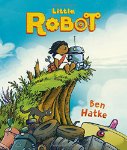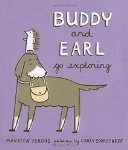One of the things that makes nursery rhymes so appealing are the colorful characters that feature in them. Often the characters do wonderfully strange and amusing things that make us laugh when the rhymes are read to us. In today's poetry title we encounter some of the most charming characters that live in the world of nursery rhymes.
 The people of the town: Nursery-Rhyme Friends for You and Me
The people of the town: Nursery-Rhyme Friends for You and Me
 The people of the town: Nursery-Rhyme Friends for You and Me
The people of the town: Nursery-Rhyme Friends for You and Me
Selected and illustrated by Alan Marks
Poetry Picture Book
For ages 4 to 6
Charlesbridge, 2016, 978-1-58089-726-6
Nursery rhymes are packed with colorful characters; men,
women, and children who do all kinds of things that delight us and often make
us laugh. In this marvelous collection, Alan Marks pairs his wonderful artwork
with some carefully selected nursery rhymes so that we can get to know a few of
these nursery rhyme individuals. Some of them will be familiar to us, but some
will be newcomers whom we have never even heard of.
Our visit with
the people living in the nursery rhyme town begins with Gregory Griggs. This
fellow has a staggering twenty-seven wigs, and he wears them to impress the
people in his town. The problem is that he has no idea which of his wigs he
likes best.
Then there is
Mary whose pet lamb follows her to school one day. This is, of course, against
the rules and so the teacher makes the lamb leave. The lamb, being a determined
little creature, stays nearby and waits for its little mistress to appear. The
children cannot understand why the lamb loves Mary so much, so the teacher
explains that it is because “Mary loves the lamb, you know.”
As the pages turn
we encounter the grand old Duke of York who marched his men up and then down
the hill. There is Dr. Foster who stepped into a puddle “Right up to his
middle,” and Little Bop Peep who lost her sheep. There are little stories that
make us laugh, and some that are delightfully peculiar. There are descriptions of
things that people do, and finally there are rhymes that sooth and make us want
to fall asleep.






